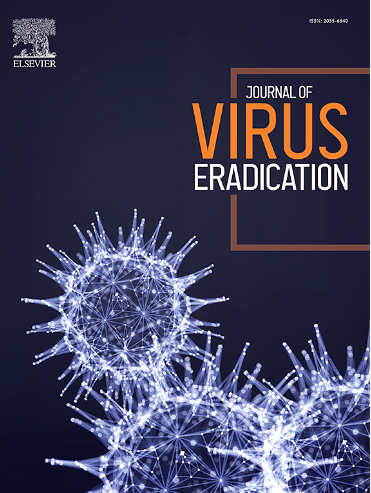在维也纳,直接观察HCV治疗的自由化方法在PWID中保持了良好的治愈率
IF 2
4区 医学
Q2 IMMUNOLOGY
引用次数: 0
摘要
直接观察治疗(DOT)是一种优化丙型肝炎病毒(HCV)治愈率的有效策略,用于注射药物(PWID)的稳定阿片类激动剂治疗(OAT)。虽然每日DOT的依从性很好,但延长DOT分布间隔是否会导致相似的持续病毒学反应(SVR)率仍不清楚。方法纳入在低阈值机构接受DOT联合直接作用抗病毒药物(DAA)和OAT治疗HCV感染的spwid。covid - 19大流行期间的社交距离要求导致DOT分配间隔延长;因此,研究人群被分为“紧张期”(DAA开始于2014-2020年)和“自由期”(DAA开始于2020-2023年)队列。比较两组患者治疗结束后第12周的社会经济特征、DOT分布表和SVR率(SVR12)。结果纳入连续PWID 719例(男性占76.5%,中位年龄39岁),“紧张期”441例(61.3%),“宽松期”278例(38.7%)。然而,“自由时期”组的基线特征在队列之间具有可比性,社会经济特征显示出更多的问题特征(失业率:83.1%对67.3%;缺乏住房:38.5%对35.1%;持续注射吸毒:64.0%对57.8%;各p <; 0.001)。“紧张期”组的DAA通常是每天一次(78.9%),而“自由期”组的DAA/OAT大多是每周一次(45.0%)或每周2-3次(24.1%;p < 0.001)。经改良意向治疗分析(排除失访[FU]或死亡的PWID),漏食DAA的数量(0.3%对0.4%,p = 0.239)和SVR12率在紧期和自由期分别相似(401/404,99.3%对194/195,99.5%,p = 1.000)。DAA治疗结束后FU的丧失在“自由期”更为常见(28.8% vs. 7.9%; p < 0.001),但没有出现治疗中断或早期停药的情况。结论dot最初旨在通过日常监督OAT和DAA摄入的严格控制来解决PWID患者的依从性问题。虽然这种方法固有地表现出对PWID的高度不信任,但我们的研究结果表明,高度信任和DOT自由化的策略以及有效的减少危害措施可以产生出色的依从性,并导致同样高的HCV治愈率。本文章由计算机程序翻译,如有差异,请以英文原文为准。
A liberalized approach to directly observed therapy for HCV retains excellent cure rates among PWID in Vienna
Introduction
Directly observed therapy (DOT) is an effective strategy to optimize hepatitis C virus (HCV) cure rates in people who inject drugs (PWID) on stable opioid agonist therapy (OAT). While adherence to daily DOT is excellent, it remains unclear if extended DOT distribution intervals result in similar sustained virologic response (SVR) rates.
Methods
PWID undergoing DOT with direct-acting antiviral agents (DAA) alongside OAT for HCV infection at a low-threshold institution were included. Social distancing requirements during the COVID19 pandemic led to an extension in DOT dispensation intervals; therefore, the study population was classified according to “tight period” (DAA start 2014–2020) and “liberal period” (DAA start 2020–2023) cohorts. Socioeconomic characteristics, DOT distribution schedules, and rates of SVR at week 12 after end of therapy (SVR12) were compared between groups.
Results
We included 719 consecutive PWID (male: 76.5 %; median age: 39 years), 441 (61.3 %) were treated in the ”tight period” and 278 (38.7 %) in the “liberal period”. Baseline characteristics were comparable between cohorts, however, socioeconomic features of the “liberal period” group showed more problematic features (unemployment: 83.1 % vs. 67.3 %; lack of housing: 38.5 % vs. 35.1 %; ongoing injection drug use: 64.0 % vs. 57.8 %; each p < 0.001).
While the “tight period” group had their DAA most commonly dispensed on a daily basis (78.9 %), the “liberal period” group received their DAA/OAT mostly once weekly (45.0 %) or 2-3x/week (24.1 %; p < 0.001). The number of missed DAA ingestions (0.3 % vs. 0.4 %; p = 0.239) and SVR12 rates by modified intention to treat analysis (exclusion of PWID who were lost to follow-up [FU] or died) were similar (401/404, 99.3 % vs. 194/195, 99.5 %; p = 1.000) between tight and liberal period, respectively.
Loss of FU after end of DAA treatment was more common during the "liberal period" (28.8 % vs. 7.9 %; p < 0.001), yet no treatment interruptions or early discontinuations occurred.
Conclusion
DOT originally aimed to address non-adherence among PWID by strict control through daily supervised OAT and DAA ingestion. While this approach inherently manifests a position of advanced distrust towards PWID, our findings suggest that a strategy of advanced trust and liberalization of DOT alongside effective harm reduction measures yields excellent adherence and results in similarly high HCV cure rates.
求助全文
通过发布文献求助,成功后即可免费获取论文全文。
去求助
来源期刊

Journal of Virus Eradication
Medicine-Public Health, Environmental and Occupational Health
CiteScore
6.10
自引率
1.80%
发文量
28
审稿时长
39 weeks
期刊介绍:
The Journal of Virus Eradication aims to provide a specialist, open-access forum to publish work in the rapidly developing field of virus eradication. The Journal covers all human viruses, in the context of new therapeutic strategies, as well as societal eradication of viral infections with preventive interventions.
The Journal is aimed at the international community involved in the prevention and management of viral infections. It provides an academic forum for the publication of original research into viral reservoirs, viral persistence and virus eradication and ultimately development of cures.
The Journal not only publishes original research, but provides an opportunity for opinions, reviews, case studies and comments on the published literature. It focusses on evidence-based medicine as the major thrust in the successful management of viral infections.The Journal encompasses virological, immunological, epidemiological, modelling, pharmacological, pre-clinical and in vitro, as well as clinical, data including but not limited to drugs, immunotherapy and gene therapy. It is an important source of information on the development of vaccine programs and preventative measures aimed at virus eradication.
 求助内容:
求助内容: 应助结果提醒方式:
应助结果提醒方式:


